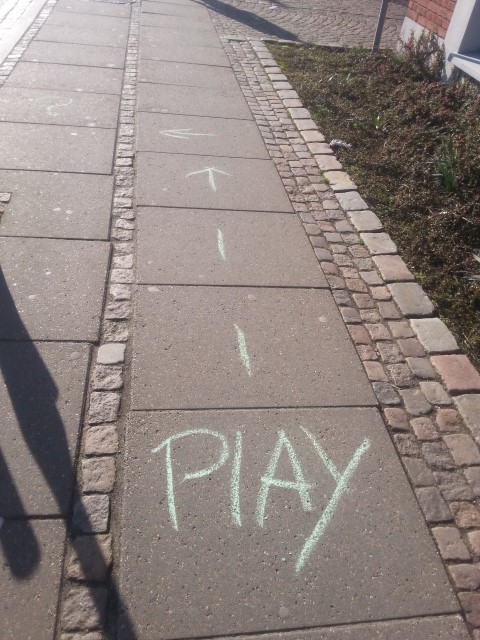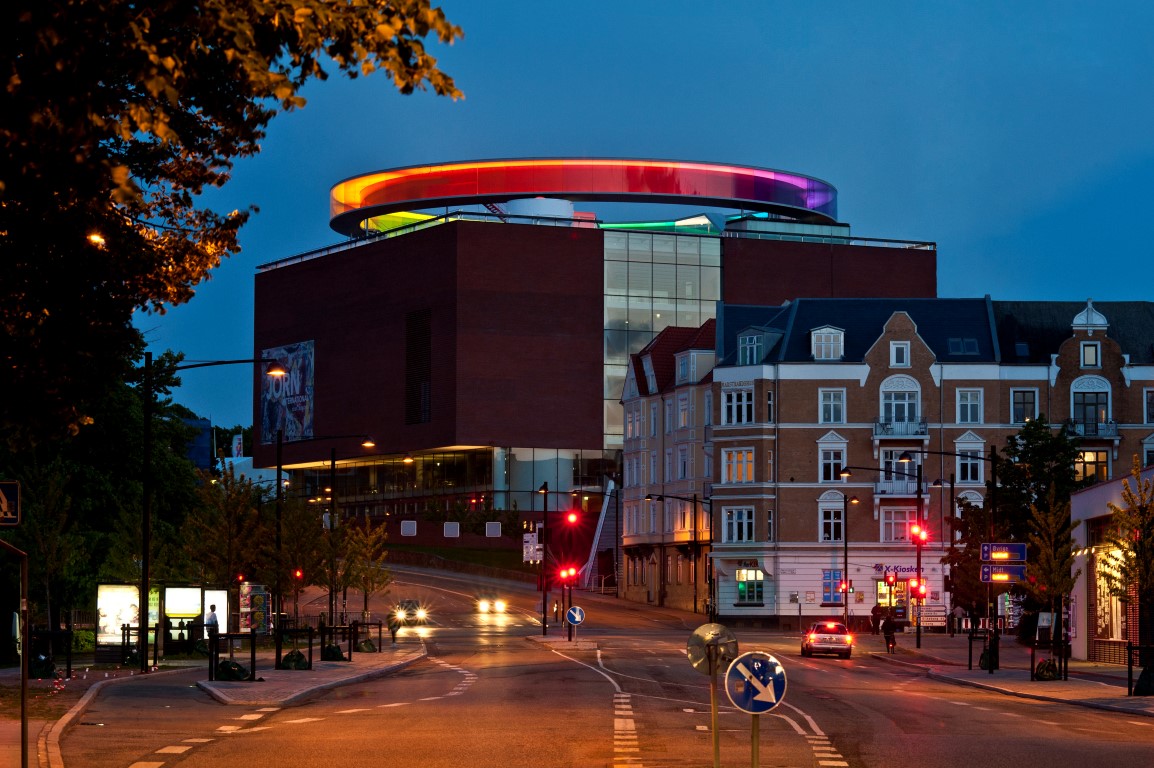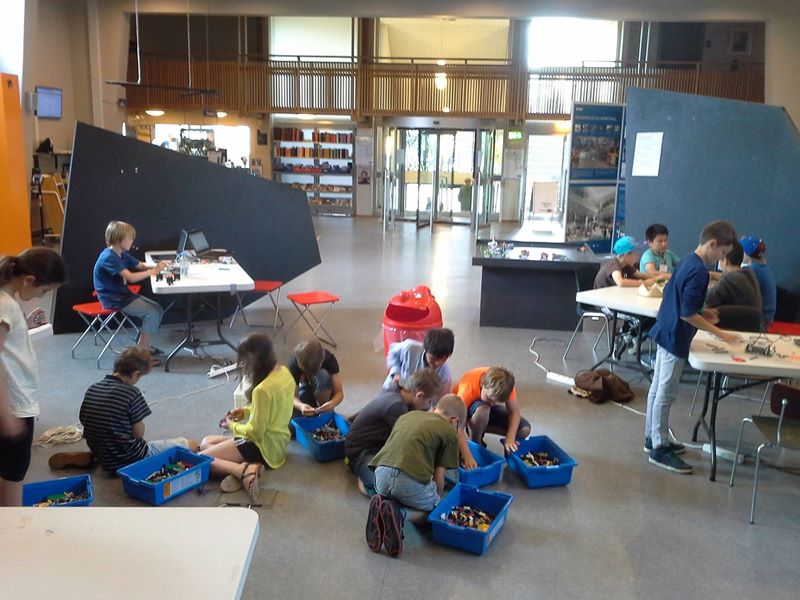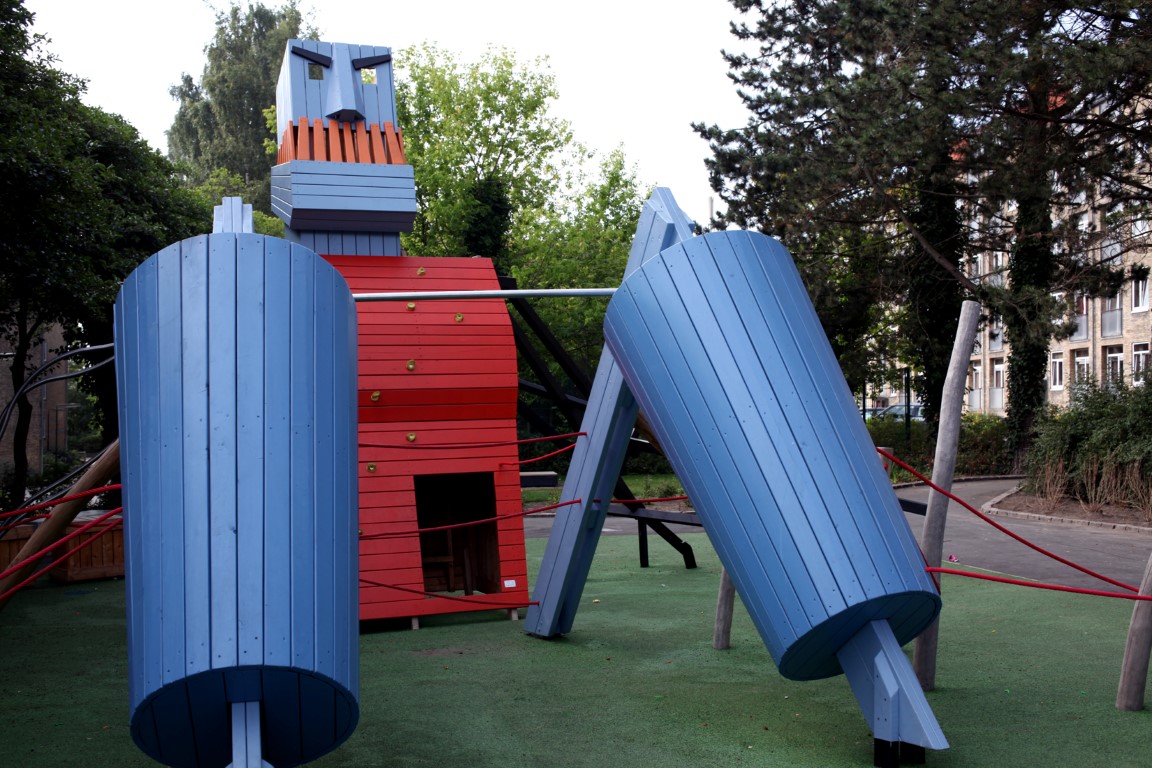 There’s not much news about CounterPlay ’15 yet, but things are starting to happen, and based on the successful first edition with 150 wonderful people, I have a lot of ideas for next year. So many things I want to do better next time, and so many new initiatives I’d like to facilitate in and around CounterPlay.
There’s not much news about CounterPlay ’15 yet, but things are starting to happen, and based on the successful first edition with 150 wonderful people, I have a lot of ideas for next year. So many things I want to do better next time, and so many new initiatives I’d like to facilitate in and around CounterPlay.
At it’s core, the purpose of the festival is the same, though:
CounterPlay aims to widen the perspective on games, play & playfulness, inviting (also) the unusual suspects into the circle. Part of this is bringing play to new arenas, challenging the notion of who can play, as well as where and when play can take place. What does it mean to be playful – in education, our work & – most importantly – our lives? I hope to evolve the festival as a space for people from different domains to meet, challenge each others perspectives, explore new types of play.
In the end, it’s about allowing more playfulness into the world.
Easy as that.
One component in going further in that direction is to create:
Stronger local communities
Quite early on, I made a (difficult, I might add) decision to situate the festival in the fairly small town of Aarhus.
This is a constant consideration, as I don’t want geography to get in the way of building a great international festival, and the local dimension only makes sense when seen in an international perspective. It’s the exchange between the local & global that I find particularly interesting (and though I talk about local in this post, I’ll get back to global later on).
I think many interesting things related to games & play are happening in and around Aarhus, and I want the festival to help show, support and grow these initiatives in any meaningful way.
By now, the festival is already somewhat rooted in Aarhus, but I would like it to become more integrated into the local community – and vice versa. I hope to see the festival spread to the streets, buildings & institutions of Aarhus; to make the town itself more playful, and to have all involved parties, including the festival, benefit from that.
At my most ambitious, I hope to create something as open, diverse, inspiring and cool as Game City in Nottingham:
Let’s create a playful movement.
Who could be part of this?
Museums, libraries, educational institutions, students, the university, the municipality, game developers, creative agencies, private companies in general…please continue the list.
Anybody with a desire to be playful in one way or another.
Here’s a few thoughts about how it could happen:
Playful cultural institutions
I was so glad to have the local main public library as an amazing partner for the first festival. It was obviously a great help that they wanted to host the festival, but what’s even better is their generally very playful approach to being a library. Take their currently running summer workshop, where kids are building & playing with robots:
I look forward to our continued collaboration, though we probably won’t be at the library again before 2016 (I am, by the way, still looking for the perfect spot for CounterPlay ’15).
Aarhus has many other interesting cultural institutions, which could be part of a movement.
Take the biggest art museum, Aros & their lovely “rainbow” by Olafur Eliasson:

This is playful in & of itself, but I’m sure we could come up with very intriguing ideas for being playful in the musuem (and the rainbow), as well as the other museums, institutions, events and festivals (should we play more at Northside?).
There’s lots of amazing inspiration for these things around the world. Take the famous video game section at MOMA. Or “PLAY!” in Sheffield:
We are looking for submissions from artists whose work takes a critically engaged approach to computer games within a fine art context. Within such a broad theme, we are specifically looking for conceptually sound work which seeks to isolate aspects of gaming for suitable artistic reflection and contemplation.
Or the playful, game jam-like “lab for reinventing museums”, Museomix:
Or the upcoming “Vertigo of Reality” at “AKADEMIE DER KÜNSTE” in Berlin, which I must visit:
The exhibition presents artistic strategies and methods of working which focus on the viewer’s perception. The artwork materialises only in and through the viewers themselves. Current developments in game art here stand within a tradition of artistic explorations beginning in the 1960s, in particular closed circuit video installations as well as performances, participation projects, films, photographic works and mirror objects.
Or, of course, all the wonderful projects & initiatives curated at the “Playful Arts Festival“:
Playful interventions in urban space
While there’s much we can do with existing cultural institutions, the opportunities may be even more diverse when turning to playful interventions in public space. Urban environments are in many ways obvious spaces of play, but often this potential remains more or less untapped. Urban spaces are frequently designed with more instrumental purposes in mind, and there seems to be many conventions tied to the way we inhabit and navigate our towns and cities. Most people probably think of it in fairly rational terms, as a place to traverse in order to get from A to B. There’s usually a number of “recreational spaces” as well, but in many cases, these are not exactly playful.
This is obviously not just about playgrounds, but it’s definitely also about playgrounds. Take for instance the Danish developer of wonderful playgrounds, Monstrum (photo by The Mythological Quarter):
While (some) playgrounds are wonderful, the scope is much wider. Look to “The Playable City” in the UK:
“The Playable City is a new term, imagined as a counterpoint to ‘A Smart City’. A Playable City is a city where people, hospitality and openness are key, enabling its residents and visitors to reconfigure and rewrite its services, places and stories.”
This is such an appealing idea, that I’d love to see unfold all over the place. One initiative, “Playing Out“, aims to make “streets a place for play” (more her):
Apparently they’re on a roll in the UK with this amazing slide by Luke Jerram:
I also love Sylvan Steenhuis‘ intervention, “Water Shootout Amsterdam”, which is a classic by now:
https://www.youtube.com/watch?v=ZU7mN7KMHys
On a much smaller scale, a group of students did a small playful intervention in relation to CounterPlay ’14, where they involved people (me included) in creating a large hopscotch grid:
https://www.youtube.com/watch?v=NzhCSYMqsvQ
Just seeing how people has to overcome a barrier to even consider playing in public space (myself included) makes me eager to further explore these things, and I would like for CounterPlay to become an active contributor to both creating and disseminating new approaches to playful cities.
Let’s play!
Are you in or around Aarhus, do you consider your work playful, or would you like it to be?
Please get in touch, as I would love to talk and involve you in the next edition of CounterPlay!


Leave a Reply